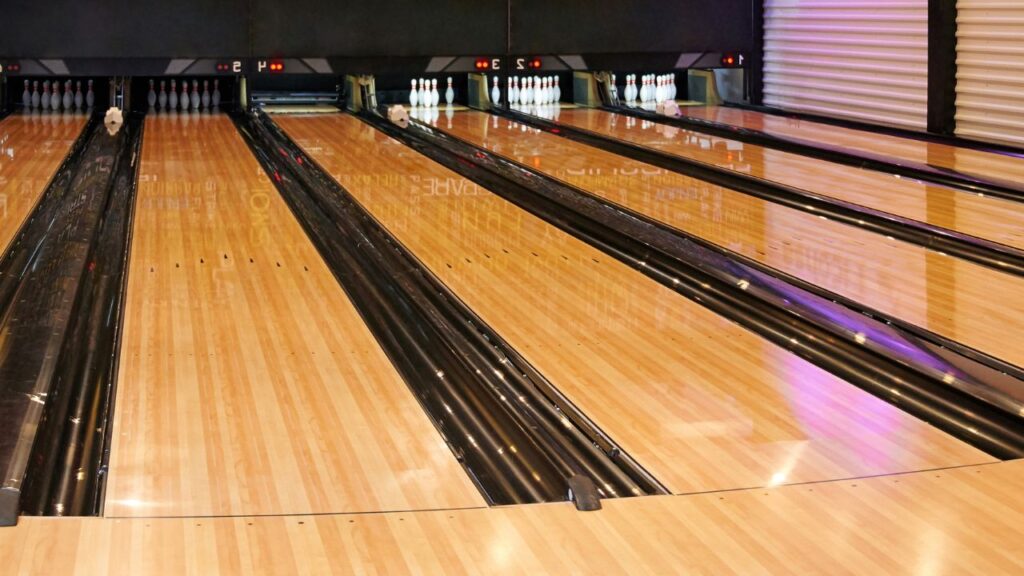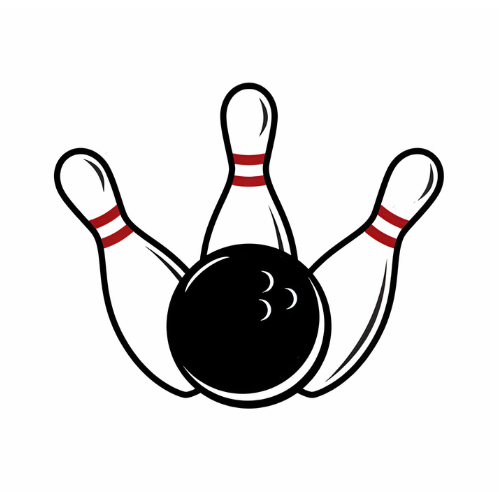All ages participate in the well-liked recreational sport of bowling. You’ve definitely noticed that bowling lanes have a distinctive slipperiness to them, whether you’re a casual bowler or a professional competition. But have you ever considered the reason for that?
The reasons why are bowling lanes slippery and how oil contributes to those conditions will be discussed in this article. Bowling has been a favorite pastime for decades, bringing people together for friendly competition and enjoyment. As you step onto a bowling lane, you can’t help but notice the smooth and polished surface that allows the ball to glide effortlessly.
Understanding why bowling lanes are intentionally slippery helps us appreciate the intricacies of the game and the efforts made to maintain optimal playing conditions.

The Role of Oil on Bowling Lanes
One of the key factors that contribute to the slipperiness of bowling lanes is the presence of oil. Bowling lanes are coated with a layer of oil to protect the wood surface and regulate the lane conditions. The application of oil is not random but follows specific patterns and guidelines to ensure fair gameplay and challenge for bowlers of all skill levels.
The Science of Bowling Lane Friction
We must study friction in order to understand why bowling alleys are slick. The force that prevents motion between two surfaces in contact is known as friction. Friction is produced in bowling as a result of the interaction between the bowling ball and the lane surface. The trajectory, speed, and general performance of the ball are all directly influenced by the degree of friction.
Different Types of Bowling Lane Oils
Various types of oil formulations are used on bowling lanes, each serving a specific purpose. Bowling centers may employ different viscosities of oil and patterns to create distinct lane conditions. The type of oil used and the degree of pattern intricacy have an impact on how the ball interacts with the lane, posing special problems and requiring different bowling techniques.
The Process of Applying Bowling Lane Oil
Maintaining consistent lane conditions requires regular oiling of the lanes. The process involves carefully applying the oil in a precise pattern using specialized oiling machines. Proper oiling techniques help distribute the oil evenly and ensure uniformity across the lanes, providing a fair playing field for all bowlers.
Factors Affecting Slipperiness of Bowling Lanes
Several factors contribute to the slipperiness of bowling lanes. Lane length, temperature, and humidity can influence how the oil behaves and affects friction. Longer lanes may require more oil to maintain consistent conditions, while temperature and humidity variations can alter the oil’s viscosity and lane behavior. Additionally, ball speed and surface texture also play a role in lane friction and slipperiness.
The Effects of Lane Slipperiness on Bowling Performance
The slipperiness of bowling lanes directly impacts a bowler’s performance. Lane conditions affect the ball’s hook potential, which refers to its ability to curve as it travels down the lane. Adjusting to different lane conditions requires bowlers to adapt their approach, ball selection, and throwing technique, making each game a unique challenge.
The Importance of Regular Lane Maintenance
To ensure consistent and enjoyable gameplay, regular lane maintenance is crucial. Bowling centers must monitor and maintain proper oil levels and patterns, taking into account factors such as lane usage and foot traffic. Well-maintained lanes provide bowlers with a fair and predictable playing surface, enhancing their overall experience.
Conclusion
Next time you step onto a bowling lane, take a moment to appreciate the science behind its slipperiness. The intentional application of oil and the intricacies of friction create a challenging yet rewarding experience for bowlers.
Understanding the role of oil, the factors affecting slipperiness, and the importance of regular lane maintenance adds another layer of appreciation for the game of bowling. So, lace up your bowling shoes, grab your favorite ball, and enjoy the unique dynamics of a slippery bowling lane.
FAQs
Does the oil on bowling lanes affect ball speed?
Yes, the oil on bowling lanes can have an impact on ball speed. The degree of friction the ball experiences as it goes down the lane can be influenced by the amount and distribution of oil. In general, more oil reduces friction, forcing the ball to slide more and may slow down. On the other hand, less oil or variations in oil patterns can increase friction, resulting in more grip and potentially higher ball speeds.
Are all oil patterns the same on every bowling lane?
No, oil patterns can vary from lane to lane and even within the same bowling center. Different oil patterns provide unique challenges and require bowlers to adjust their strategies. Bowling centers may choose specific oil patterns to cater to different skill levels or to create varying lane conditions for tournaments and competitions.
How often are bowling lanes oiled?
Bowling lanes are typically oiled daily or multiple times a day, depending on the level of lane usage. Regular oiling ensures consistent lane conditions for all bowlers and helps maintain a fair playing environment. Bowling centers follow specific oiling schedules and techniques to ensure uniformity and optimal gameplay.
Can the slipperiness of a bowling lane be adjusted during a game?
During a game, the slipperiness of a bowling lane is not typically adjusted. However, bowlers can adapt to different lane conditions by modifying their approach, ball selection, and throwing technique. Understanding the lane conditions and making appropriate adjustments is an essential skill for bowlers to achieve consistent performance.

